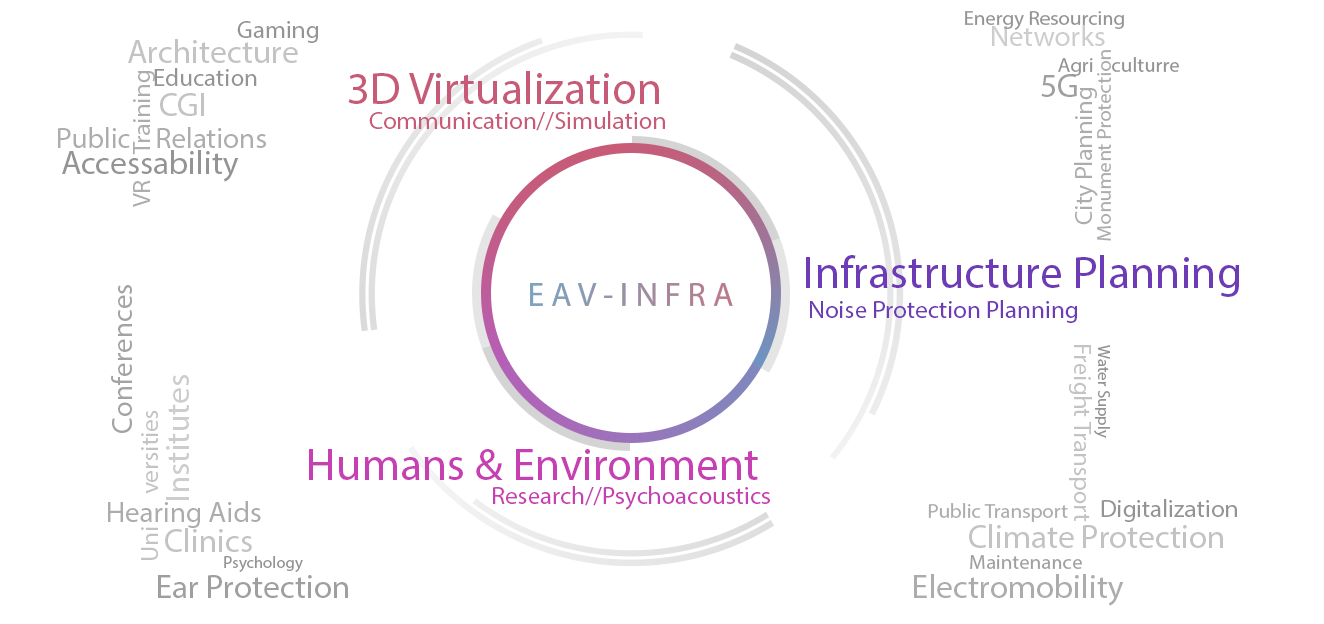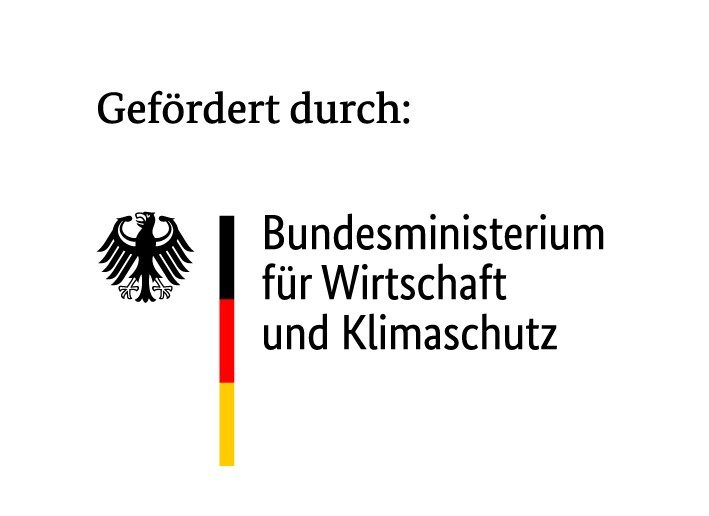Research

Auralization
Innovative real-time sound propagation models need to be developed for auralization and visualization. For this purpose, specific information and measurement data are required, which should be generated using an autonomous measurement station consisting of a high-resolution array of digital MEMS microphones and sensors for capturing image, weather, and GPS data. The angle-dependent partial sound source separation required for complex simulations will be pursued by combining beamforming algorithms with classifiers. For this purpose, the sensor system will provide the necessary training and validation data.
Digital Twin
For data management, interfaces and transmission technologies need to be established for the automated integration of both conventional and new datasets into the Digital Twin. The primary focus is on the lossless exchange of data using open interfaces and transmission technologies. This includes geospatial data, conventional existing and planning data, BIM data, and additional material parameters for acoustic characterization. These data should be bidirectional, redundant, lossless, and versioned, allowing them to be transmitted between external specialized authoring systems and the EAV Infrastructure Ecosystem.
Psychoacoustics
A prerequisite for psychoacoustic investigations aimed at developing new standards is the realistic recording of representative sound emissions and their playback and evaluation under controlled conditions. The acoustic signals of the audiovisual scene descriptions should be subjected to psychoacoustic signal analysis.
To derive insights into the necessary perceptual relationships, auditory experiments on the effectiveness of the measures should be conducted. By linking the subjective results with the analyses, a model for the perceptual effectiveness of the measures will be derived.
Sound calculation/Noise protection planning
For the implementation of largely automated noise protection planning, a learning approach using genetic AI algorithms is applied. This approach is based on the iterative optimization of many individuals (i.e., noise protection proposals) according to psychoacoustic quantification criteria, using the developed sound propagation models, and taking into account legal requirements. In a suitable implementation, some of the individuals converge toward optimal noise protection solutions through repeated evolutionary selection and deliberate variation, revealing solution proposals that were hidden using conventional heuristic methods.

